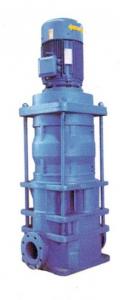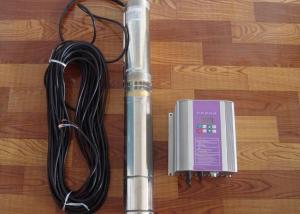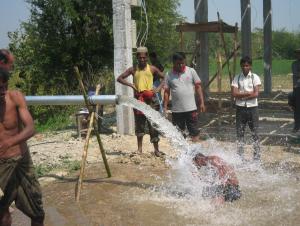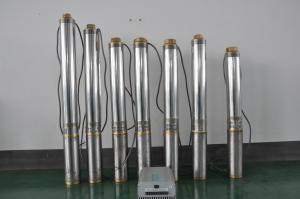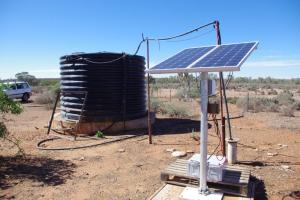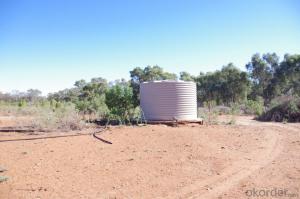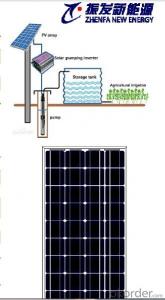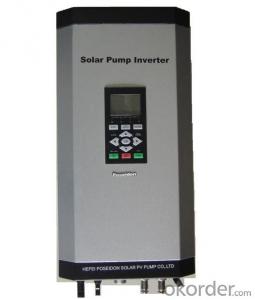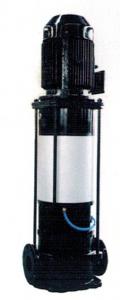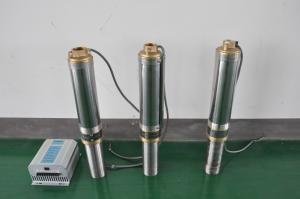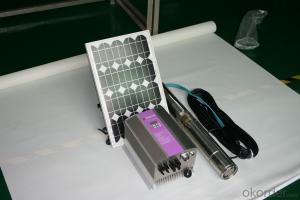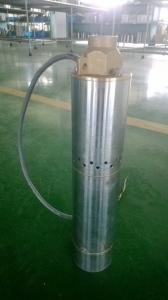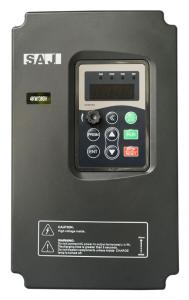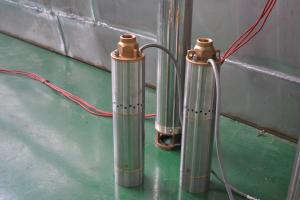Amazon Solar Pump - L3D-40-180 Solar Water Pump
- Loading Port:
- China Main Port
- Payment Terms:
- TT OR LC
- Min Order Qty:
- -
- Supply Capability:
- 300 sets unit/month
OKorder Service Pledge
OKorder Financial Service
You Might Also Like
Product description:
Product: Solar water pump
Model:L3D-40-180
Appilication:
surface pump
for surface water of pond, river, lake
for irrigation of a big farm with 30000 m2 on the top of a mountain
Product specification:
flow rate:40m3/ hour, 280m3/day.
lift: 10m-180m
pump diameter: 610mm
Pump installed on the ground, outlet to the water surface:4m
with AC motor, motor power:22kW
but only need solar power:24kW(while Grundfos pump needs at least 45kW solar power, our pump can save more than 50% solar panel power,save USD15000 cost for solar panel per set.
Material:
Pump inside: stainless steel and wearable nylon,it enables our solar pump to have 10 years sevice life.
Motor : AC motor, 380V , three phase , 50Hz. The pump also can connect with grid power directly.
Certification:
3 International patent
ISO9001
CE
Warranty:2 years
- Q: Can a solar pump be used in areas with limited access to skilled labor for repairs?
- Yes, a solar pump can be used in areas with limited access to skilled labor for repairs. Solar pumps are designed to be low maintenance and have fewer moving parts compared to traditional pumps, reducing the need for frequent repairs or skilled labor. Additionally, solar pumps are often simple to install, operate, and troubleshoot, making them suitable for use in remote or rural areas where skilled labor may be scarce. The use of solar pumps can provide a reliable and sustainable solution for water pumping needs in such areas.
- Q: Can a solar pump be used for hydroponic farming systems?
- Yes, a solar pump can definitely be used for hydroponic farming systems. Hydroponic farming involves growing plants without soil, typically using water as the growing medium. A solar pump can provide the necessary water circulation and nutrient delivery to the plants in a hydroponic system. Since solar pumps are powered by sunlight, they are a sustainable and cost-effective option for powering hydroponic systems. By harnessing solar energy, farmers can reduce their reliance on traditional energy sources and decrease their carbon footprint. Solar pumps can be easily integrated into hydroponic systems, providing a reliable and environmentally friendly solution for water and nutrient management.
- Q: How do I ensure the safety of the electrical components in a solar pump system?
- To guarantee the safety of the electrical components in a solar pump system, there are several essential measures that can be taken: 1. System installation and grounding must be done correctly: It is vital to adhere to the manufacturer's instructions and guidelines for the installation of the solar pump system. This includes proper grounding to protect against electrical faults and lightning strikes. 2. Opt for high-quality components: Invest in top-notch electrical components like solar panels, inverters, and wiring. This will minimize the chances of malfunctions and ensure the longevity of the system. 3. Conduct regular maintenance and inspections: Routinely examine the electrical components for any indications of wear or damage. Check for loose connections, exposed wires, or any other potential issues. Clean the solar panels to maintain efficiency and remove any debris that may affect performance. 4. Integrate overcurrent protection: Install suitable fuses or circuit breakers to safeguard the system against overcurrent situations. This will prevent overheating and potential electrical fires. 5. Install surge protection devices: Lightning strikes and power surges can pose a significant threat to the electrical components of a solar pump system. By installing surge protection devices, excess voltage can be diverted away from the system, providing added protection. 6. Educate yourself and others: Familiarize yourself with the operation and safety guidelines of the system. Ensure that anyone involved in handling or maintaining the system receives proper training on safe operation, potential hazards, and emergency procedures. 7. Comply with local electrical codes and regulations: When installing or modifying the solar pump system, it is essential to adhere to local electrical codes and regulations. This will ensure the system's safety and legal compliance. Remember, if you have any doubts or concerns about any aspect of the installation or maintenance process, it is advisable to seek assistance from a professional electrician or solar technician to guarantee the safety of your solar pump system.
- Q: How does a solar pump handle power outages or blackouts?
- A solar pump is not affected by power outages or blackouts because it operates solely on solar energy. It uses photovoltaic panels to convert sunlight into electricity, which powers the pump. Therefore, even during power outages, the solar pump can continue to function as long as there is sufficient sunlight available.
- Q: Can a solar pump be used to pump oil or gas?
- No, a solar pump is not suitable for pumping oil or gas due to the different viscosity and pumping requirements of these substances.
- Q: Can a solar pump be used in areas with limited access to water level indicators?
- Yes, a solar pump can still be used in areas with limited access to water level indicators. Solar pumps are designed to be efficient and reliable, relying on solar energy to power the pump. While water level indicators can be helpful in monitoring and managing water levels, they are not necessary for the operation of a solar pump. The pump can still extract water from a well or other water source, even without accurate water level information. However, it is important to regularly check and monitor water levels to ensure sustainable usage and prevent over-pumping.
- Q: Are there any government incentives or subsidies for installing solar pumps?
- Yes, there are indeed government incentives and subsidies available for installing solar pumps. These incentives vary by country and region, but they are typically aimed at promoting renewable energy adoption and reducing dependence on fossil fuels. Governments often offer financial support, tax credits, grants, low-interest loans, or feed-in tariffs to encourage individuals or businesses to invest in solar pump systems. These incentives make solar pump installation more affordable and help accelerate the transition towards sustainable energy solutions.
- Q: Can a solar pump be used for water circulation in a cooling tower or industrial process?
- Yes, a solar pump can be used for water circulation in a cooling tower or industrial process. Solar pumps are designed to harness the energy from the sun and convert it into mechanical energy to circulate water. They are commonly used in various applications, including irrigation, water supply, and cooling systems. In the case of a cooling tower or industrial process, a solar pump can be utilized to circulate water within the system. The pump can draw water from a source, such as a reservoir or a well, and then distribute it throughout the cooling tower or industrial process, ensuring a continuous flow of water for cooling or other industrial needs. The advantages of using a solar pump in these applications are numerous. Firstly, solar pumps are eco-friendly as they derive their power from the sun, reducing dependence on fossil fuels and minimizing greenhouse gas emissions. This aligns with the growing trend towards sustainable and renewable energy sources. Secondly, solar pumps often have low operating costs as they do not require electricity from the grid. Once the initial investment in the solar pump system is made, the ongoing operational expenses are minimal, resulting in cost savings over time. Additionally, solar pumps are typically reliable and require minimal maintenance. They are designed to withstand harsh environmental conditions and can operate efficiently even in remote locations where access to electricity may be limited. In summary, a solar pump can certainly be used for water circulation in a cooling tower or industrial process. It offers the benefits of sustainability, cost-effectiveness, and reliability, making it a viable option for various industrial applications.
- Q: How does a solar pump help in reducing the risk of water pollution?
- A solar pump helps in reducing the risk of water pollution by eliminating the need for traditional fuel-powered pumps that often leak oil and other harmful substances into the water sources. As solar pumps operate solely on renewable energy from the sun, they do not produce any pollutants or emissions that could contaminate the water, ensuring cleaner and safer water supplies.
- Q: Can a solar pump be used for desalination purposes?
- Yes, a solar pump can be used for desalination purposes. Solar pumps can provide the necessary energy to power desalination systems, such as reverse osmosis or solar stills, which remove salt and other impurities from seawater to make it suitable for drinking or irrigation. The use of solar pumps for desalination offers a sustainable and environmentally friendly solution in regions with limited access to freshwater sources.
Send your message to us
Amazon Solar Pump - L3D-40-180 Solar Water Pump
- Loading Port:
- China Main Port
- Payment Terms:
- TT OR LC
- Min Order Qty:
- -
- Supply Capability:
- 300 sets unit/month
OKorder Service Pledge
OKorder Financial Service
Similar products
Hot products
Hot Searches
Related keywords
